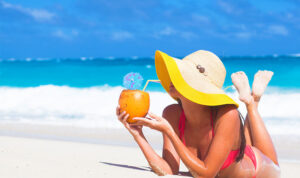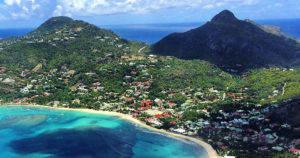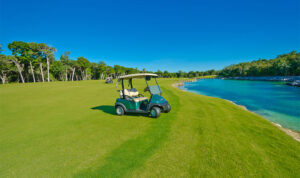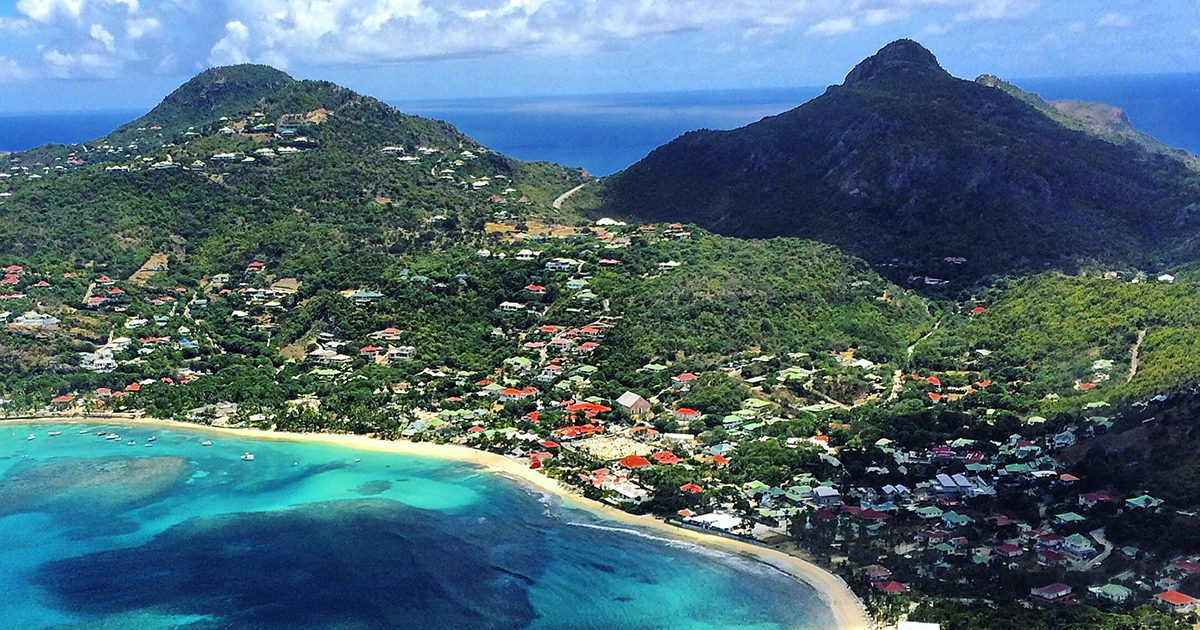The island of Martinique is flanked by the Atlantic Ocean on the east and the Caribbean Sea on its west. In its culture, language, and lifestyle, Martinique is every bit a French Caribbean country. It is nestled between St. Lucia and Dominica and forms a part of the Caribbean archipelago. The island enjoys a pleasant climate all through the year. Gusty trade winds twist around coconut trees that line the dazzling white beaches and the daily average temperature hovers somewhere around a comfortable 77 degrees F (25 degrees C). This fine tropical climate has earned Martinique the epithet of the “land of the everlasting spring”.
Visitors to the island can expect a thrilling journey across white beaches that sparkle in the sun. In some places, like the southern parts of the island, the sand is streaked with a darker hue that glows. The island’s topography is dominated by secret caves, bays, inlets, and ravines. The coves of Salines, Le Diamant, Fonds Blancs or Noire are pristine marine spaces that soothe the senses and invigorate the mind.
The native Martinique population comprises of Afroindios, Blacks and Mestizos. Since, it’s a part of the European Union, the influence of Europe, and particularly of France, is too obvious to miss. French-based creoles are spoken along with African languages and the native literature is steeped in the languages of the Antilleans. Food habits are largely West Indian. As Caribbean natives, the people of Martinique are peaceful, jolly, welcoming, and warm-hearted.
The island offers exclusive sights of the Atlantic and the Caribbean Sea. Saint-Pierre, the City of Art and History, offers a pleasant walk. The Discovery Center of Earth Sciences is also located here. The Fort-de-France is the administrative capital of the island. It houses the Cathedral of Saint Louis, the Savannah Garden, Schoelcher Library, and the Floral Park. The Butterfly Garden near Le Carbet tunnel is a reserve for butterflies where visitors can spend long hours musing over them. The Falaise Gorges are a wonder of nature and is famous for its fountains bursting out of stones. Visitors can expect to encounter the mighty python or gentle native seabirds. Le Diamant is famous for the recently discovered ruins that date back to the pre-Columbian times. For more information about Events and Things to Do in Martinique, visit our dedicated country page.
Rainforests, caves, trails on the volcanic soil and some serious beach lounging concoct a holiday that is hard to forget. Visitors to the island enjoy snorkeling, swimming, and surfing just like on any other beach but it is the Caribbean spirit that gives the pleasures an identity of their own. The French territory of Martinique is a unique blend of Caribbean and European cultures. It is at once a part of the past and the future.












